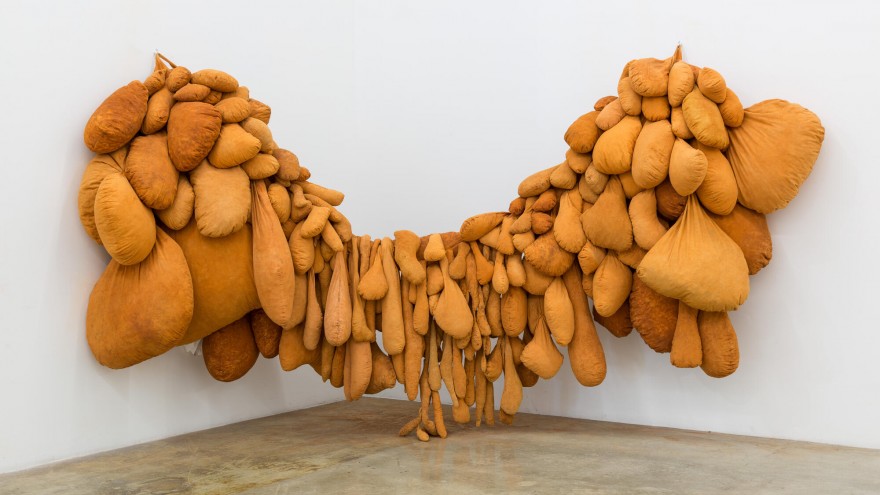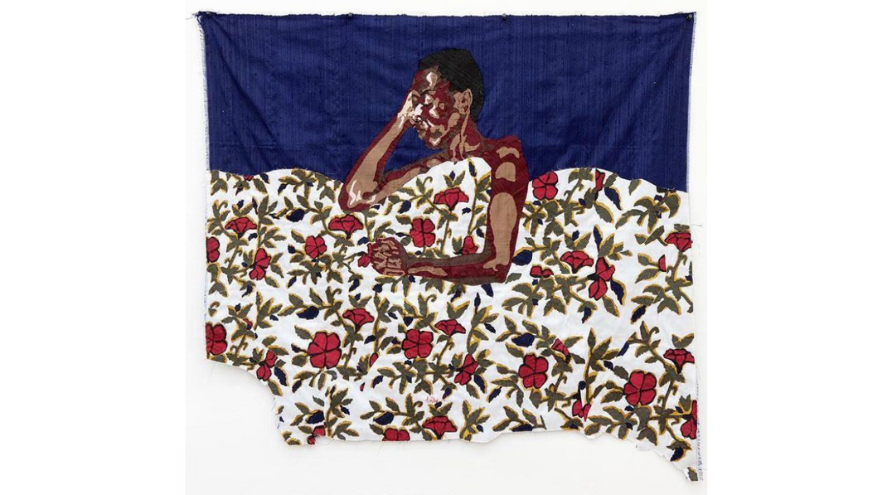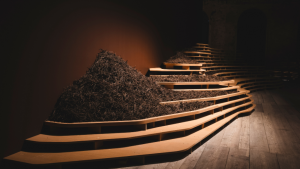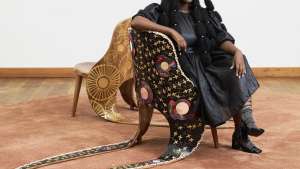Fifty international and intergenerational artists use textiles to communicate vital ideas about power, resistance and survival in a major group exhibition, Unravel: The Power and Politics of Textiles in Art, at The Barbican in London between Tuesday 13 February and Sunday 26 May 2024.
Drawn to the tactile processes of stitching, weaving, braiding, beading and knotting, and the ability for fibre and thread to tell stories that challenge power structures, transgress boundaries and reimagine the world around them, the artists include South Africans Nicholas Hlobo, Igshaan Adams and Billie Zangewa, and notable names such as Magdalena Abakanowicz, Louise Bourgeois, Judy Chicago, Tracey Emin, Jeffrey Gibson and Yinka Shonibare.
‘Textiles cover and protect us, engage our senses, trigger our memories, represent our beliefs, hold our stories. We are wrapped in cloth when we’re born and enshrouded in it when we die,’ writes The Barbican. ‘As an artistic medium, textiles can speak to the joys and pains of being human, as well as the larger structures and systems that shape our world.’
Organised thematically, Unravel: The Power and Politics of Textiles in Art considers the various ways in which artists have used textiles to tell stories of marginalisation and exclusion, as well as emancipatory joy and transcendence. The show’s earliest works were created in the 1960s, when many artists were pushing the sculptural boundaries of the medium and challenging the limiting parameters of ‘fine art’ and ‘craft’.
The exhibition presents six themes: Subversive Stitch, Fabric of Everyday Life, Borderlands, Bearing Witness, Wound and Repair, and Ancestral Threads. Together the themes explore the role of textiles in artistic practices that challenge dominant narratives.
Judy Chicago tackles stigma surrounding the beauty of being a female and the truth of the birth process in a series titled ‘The Birth Project’. One particular piece is ‘Birth/Tear’ (1982), a visceral depiction of the birthing process in painting and needlework.
Hannah Ryggen’s ‘Blood in the Grass’ (1966) is a tapestry expressing the artist’s deeply-held pacifist and socialist principles, particularly relating to the Vietnam war. This artificially dyed wool tapestry depicts then-US president Lyndon B Johnson wearing a cowboy hat, while a neighbouring panel with a blood-red grid dividing tufted green rectangles represents the destroyed Vietnamese landscape.
Yinka Shonibare’s figurative sculpture ‘Boy On A Globe’ uses his signature Dutch wax fabric technique to address race, class and the legacy of imperialism by reflecting on colonial trade and the ‘entangled economic histories embedded within fabrics’.
Read more







